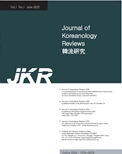- 권한신청
- E-ISSN2950-8835
A Study on the Currency circulation of Myeong-do-Jeon in Gojoseon
YOUN, Myoung-Kil (College of Health Industry, Eulji University)
Abstract
The purpose of this study is to discuss how Dongi People in ancient societies resided in the region including the Korean Peninsula shaped its economy, what kind of currency was used, and their economic activities using this currency. This study started from a skeptical point of view that the Dongi People were conducting economic activities with the currency used in the country made by the Jina People before and after the Gojoseon society. Currently, in China, all currencies issued in China are treated as their own currency. It is due to subjective interpretation from a nationalist point of view. Japan subjectively interprets and judges from a Japanese point of view and North Korea judges from the central point of view on the Korean Peninsula. This difference is due to the subjective interpretation from the researcher which has been affected by their associating academic area. This has caused the lack of objectivity. In other words, it means that there is a big difference in the perception of the interpretation of history between different academic areas. This study, therefore, tried to avoid the application of biased concept or academic research in order to define the distribution economics more objectively by conducting the study based on the literature sources from Chinese ancient books and field research materials as much as possible, as the study and research conducted based on the domestic sources are insufficient in the sense that there is a gap between different perceptions and interpretations. As a conclusion of this study, the excavation area of Myeong-do-jeon is perfectly consistent with the old river area of Gojoseon, and in particular, considering Gojoseon was in the hostile relationship with Yan, it was found that only Myeong-do-jeon was used without using any other Chinese currency in the entire Gojoseon area, not just some areas. It is also a decisive clue to prove that it is not the Yan currency. The limitation of this study in developing the discussion different from the current research and study is that there was a lack of exploration and investigation of various documents and relics. For future research, this study will become more meaningful when it is conducted simultaneously with the discovering of new documents as well as the relics.
- keywords
- Gojoseon, Currency Circulation, Myeong-do-jeon, Jina People, Dongi People
- 다운로드 수
- 조회수
- 0KCI 피인용수
- 0WOS 피인용수














